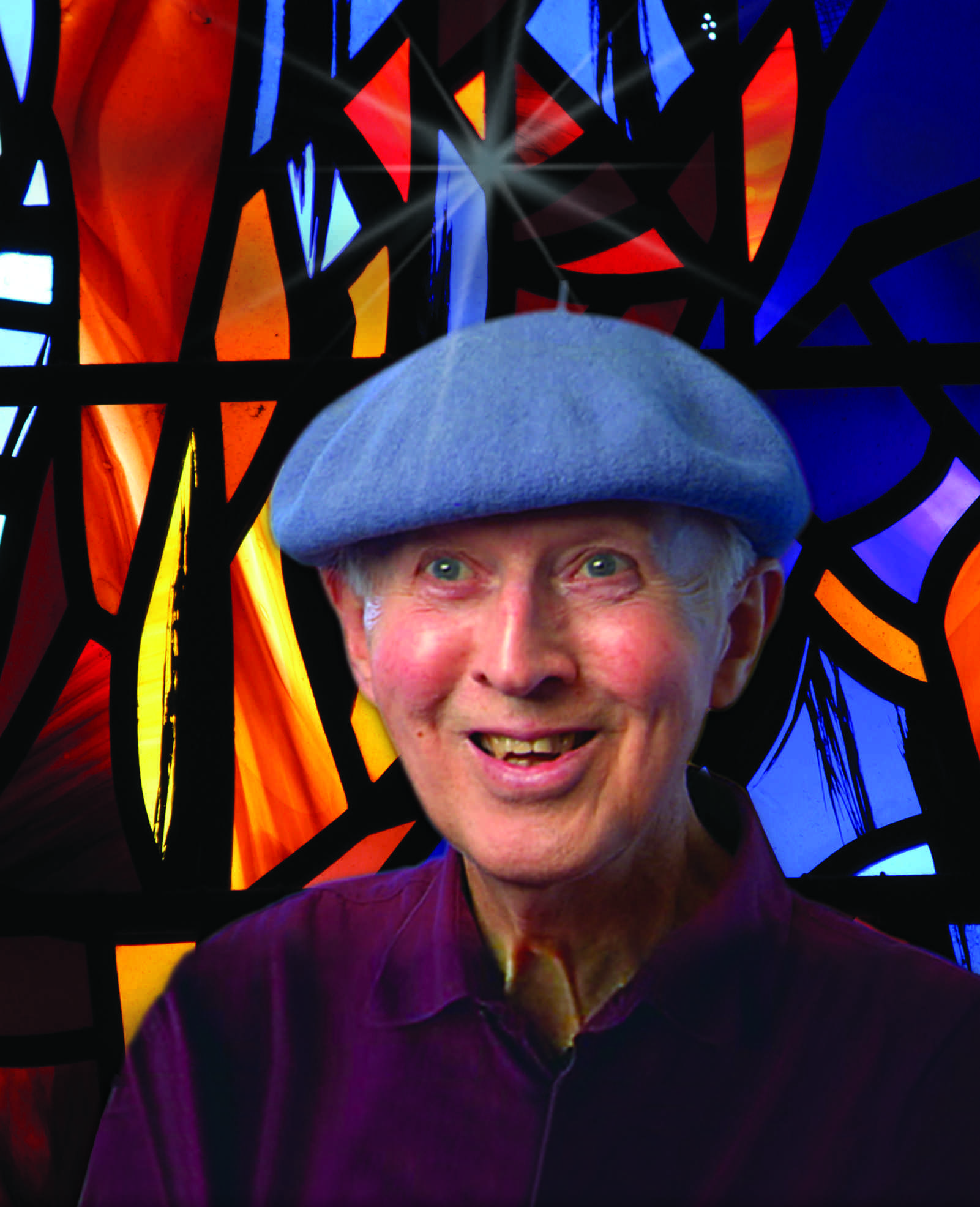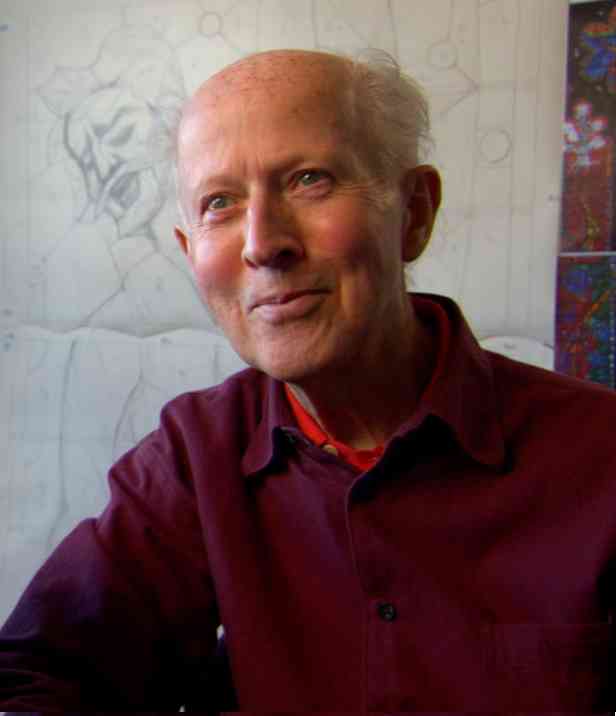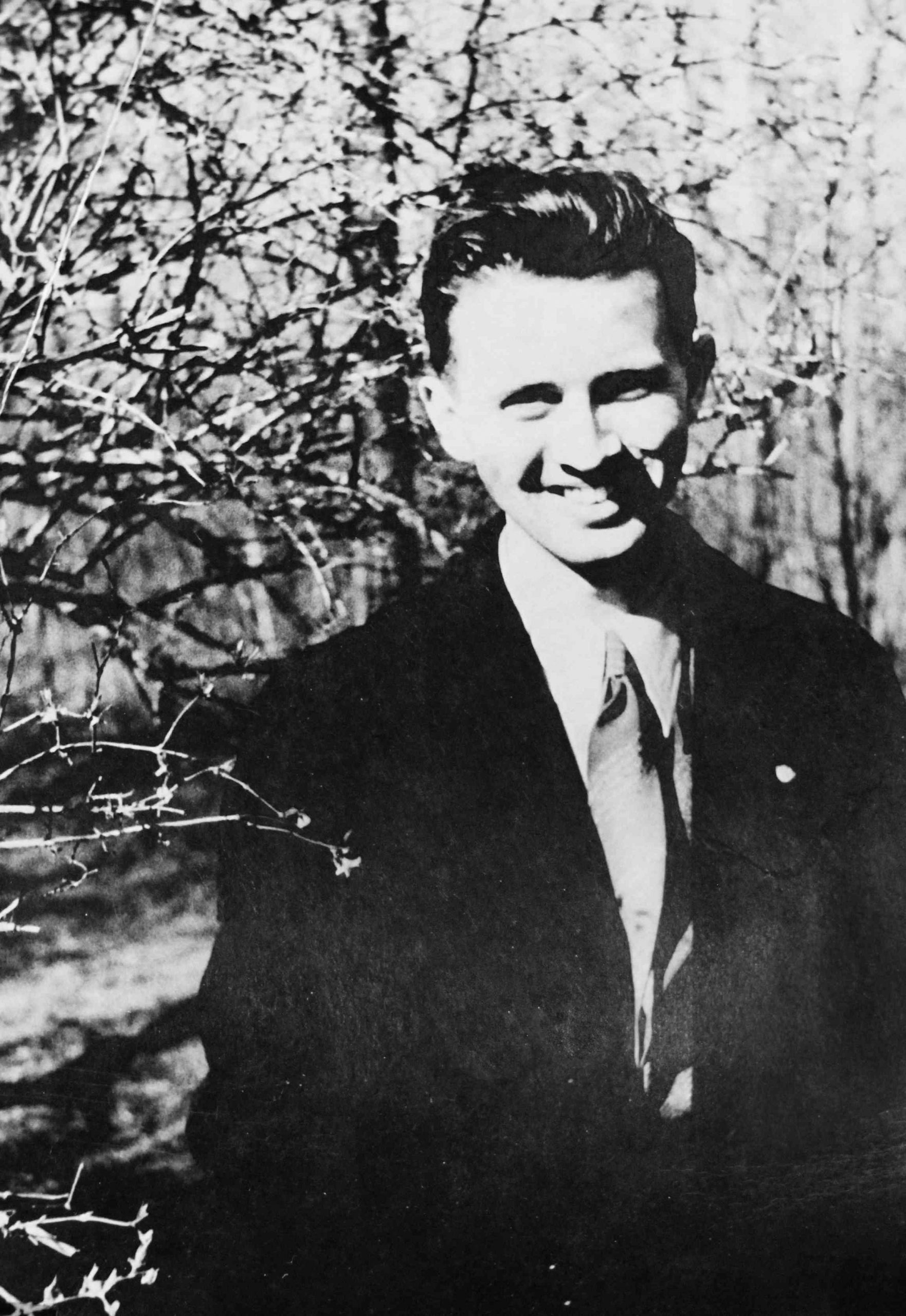Rowan Keith LeCompte
Rowan Keith LeCompte was one of the twentieth centuries most important stained-glass artists. He designed windows for over 50 buildings across the United States, including the New York State Governor’s office and Princeton University’s Chapel. His main body of work, however, was for Washington National Cathedral, the 6th largest cathedral in the world, for which he designed over 40 windows and several mosaics.
His two masterpieces in the cathedral, the West Rose and the nave clerestory, elevate him to a level of international importance as an artist. The Washington Times says, “The work on the clerestory and rose window in the national cathedral in the capital of the world’s most powerful country is one of the major stained-glass commissions of the century. It’s comparable to Henri Matisse’s chapel in Vence, France, and Marc Chagall’s windows at the Hadassah-Hebrew Medical Center chapel in Jerusalem.” The Washington Post said of the West Rose, “At its unveiling in 1976, viewers were astonished at how the eye was drawn from one cluster of light to the next, as if viewing a painting by Helen Frankenthaler or Jackson Pollock. The colors sparkled, faded and glowed, changing by the hour and imparting a sense of mystery and, in the eyes of many, the divine.” Von Eckardt, the Post critic, called it “a glorious hallelujah in colored light.”


“He’s been a major force in the adaptation of modern modes of expression in traditional stained glass,” says Virginia Raguin, a historian of stained glass teaching at College of the Holy Cross in Worcester, Mass. “He treads a line between abstract formal qualities dominant in modernist art and traditional figurative imagery.”
It is this marriage of modernity in a Gothic setting that is truly Rowan’s legacy. He spent a lifetime studying the medium and pushing its boundaries, always with the aim of creating art. As early as 1955, he wanted to have stained glass “assert itself as a great modern art.” Jim Whitney, past president of the Stained Glass Association of America, calls Mr. LeCompte “definitely one of the great masters.”
Mary Clerkin-Higgins, past president of The American Glass Guild says, “Rowan’s innovations were in how to vibrantly tell a story in modern stained glass without killing the beauty of the glass. Professor Raguin says, “His windows are known for their clear, bright, jewel-toned colors”, she says, “because he uses larger expanses of glass than do some artists and he does not allow the lead lacing between the glass to overwhelm the main picture.” This sentiment is echoed by German master craftsman Dieter Goldkuhle: “He is able to manipulate the transparency of the glass by crosshatching rather than filming it, so he wants to maintain the transparency of the glass as much as possible, and maintain the ‘glassiness’ of a window, which is very different from other windows which were heavily filmed, which stops the light at that plane.”
Rowan was born in Baltimore in 1925, the second son of Stuart and Helen LeCompte. His elder brother Stuart Jr. was a glass chemist and instilled in Rowan a curiosity about the world. He had an early interest in architecture but fell in love with stained glass at the age of 14 when he first visited Washington National Cathedral. His father was a baker, and early in his career, Rowan fired glass designs in his oven. His talent was evident to cathedral architect Philp Frohman, who gave Rowan his first cathedral commission when he was just 16.
In the Army during the Second World War, he took part in the Normandy invasion and the liberation of Paris. There was no school at which to study this medieval art, so LeCompte learned alone, with occasional tutorials from other masters. Stained glass may have been an ancient art, but he was not simply trying to recreate a lost art, he said, and saw his windows as an expression of his time.
He was a modern artist, but he was adamant about respecting the essence of the buildings in which his windows were enshrined. In his own words, “The best artists are sometimes doing modern windows in ancient buildings, but if the artist really understands the beauty and the eternal quality of the building…what is beautiful, that could be here, that makes this building more beautiful, that would be friendly with this building and not try to tear the building apart, and the best modern stained glass designers have made windows that are really beautiful and are modern, and yet are appropriate to that building.” By this definition, Rowan LeCompte was absolutely one of the best.
